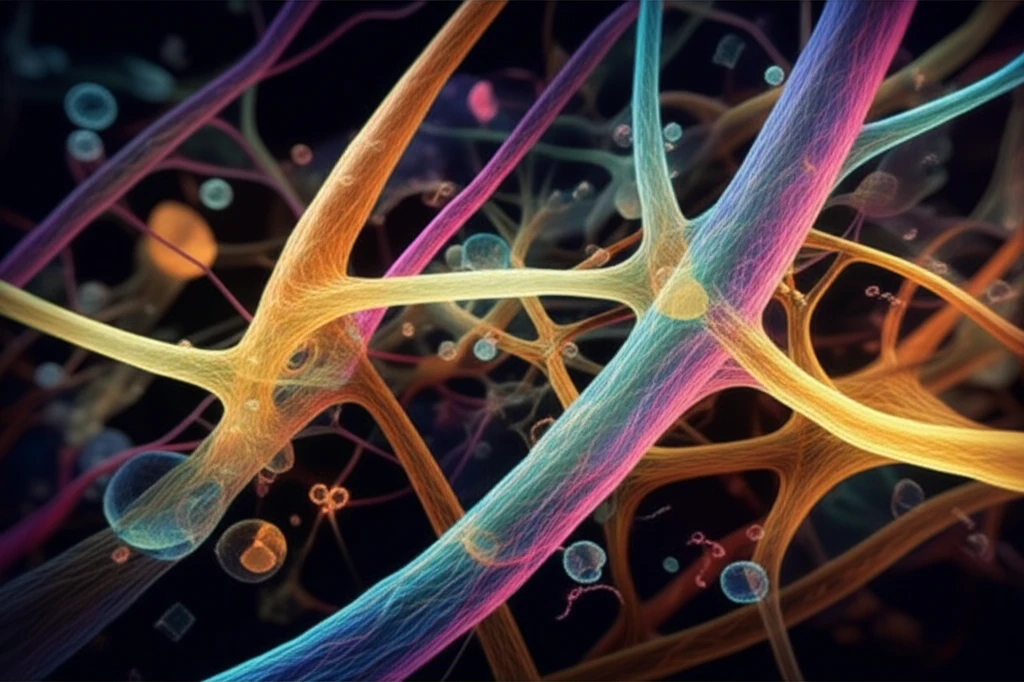
The Tubulin Code: How Your Cells Build Functional Microtubule Mosaics
"Unlocking the secrets of cellular architecture, from transport to division."
Imagine a city's infrastructure – the roads, bridges, and railways that keep everything connected and functioning. Inside our cells, microtubules play a similar role. These tiny, tube-like structures are part of the cytoskeleton, providing support and acting as highways for the transport of essential cargo.
But here's the fascinating part: these cellular 'highways' aren't all the same. They are built from different versions of a protein called tubulin, each with its own unique chemical modifications. This diversity isn't random; it's a carefully orchestrated code that cells use to fine-tune how microtubules interact with other components and how they behave.
This article delves into the world of tubulin diversity. We’ll explore how cells exploit these differences to build specialized microtubule networks, or 'mosaics,' that are essential for a wide range of cellular tasks, from transporting molecules to dividing cells and even making our heart muscles contract. Join us as we uncover the secrets of this intricate cellular architecture.
Decoding Tubulin Diversity: More Than Just Building Blocks

Microtubules, along with actin and intermediate filaments, constitute the three primary cytoskeletal systems in eukaryotic cells. They are cylindrical polymers formed through the non-covalent assembly of αβ-tubulin heterodimers. These microtubules provide mechanical support to cells, serve as pathways for cargo transport, and facilitate chromosome segregation during cell division. To fulfill these varied functions, cells construct microtubule arrays exhibiting diverse morphologies and dynamics.
- Stable Bundles in Neurons: Facilitate efficient cargo transport via molecular motors.
- Dynamic Bipolar Spindles: Capture chromosomes and generate force for chromosome separation during cell division.
- Platelet Rings: Provide the characteristic discoid shape for platelets.
- Axonemes: Highly stable, nine-fold symmetric structures optimized for high-flux cargo movement and resistance to mechanical forces during ciliary or flagellar beating.
The Future of Tubulin Research
Cells clearly invest significant resources in regulating tubulin isoform and posttranslational diversity. However, we currently lack a comprehensive understanding of how tubulin isoforms are distributed in cells and how tubulin posttranslational patterns are generated and maintained. Future research must determine the length-scales of mosaic blocks and the fidelity in generating patterns. By combining advanced imaging techniques, biochemical characterization, and in vitro reconstitution, scientists can unravel the intricate mechanisms that govern the assembly and function of microtubule arrays, leading to new insights into cellular processes and potential therapeutic interventions.
